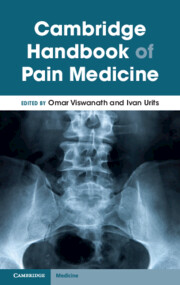Book contents
- Cambridge Handbook of Pain Medicine
- Cambridge Handbook of Pain Medicine
- Copyright page
- Contents
- Contributors
- Pain Handbook Introduction
- Part I Introduction to Pain: Pain Signaling Pathways
- Part II Common Categories of Pharmacologic Medications to Treat Chronic Pain
- Part III Chronic Pain Conditions Head and Neck
- Part IV Spine
- Part V Extremities
- Part VI Misc
- Chapter 26 Post-herpetic Neuralgia (PHN)
- Chapter 27 Complex Regional Pain Syndrome (CRPS)
- Chapter 28 Sickle Cell Disease
- Chapter 29 Breast Pain
- Chapter 30 Post-thoracotomy Pain
- Chapter 31 Multiple Sclerosis Pain
- Chapter 32 Cerebral Palsy
- Chapter 33 Myofascial Pain Syndrome
- Chapter 34 Post-stroke Pain
- Chapter 35 Chronic Abdominal Pain
- Chapter 36 Chronic Pelvic Pain
- Chapter 37 Postsurgical Nerve Entrapment
- Chapter 38 Cancer Pain
- Part VII Adjunctive Therapy
- Index
- References
Chapter 30 - Post-thoracotomy Pain
from Part VI - Misc
Published online by Cambridge University Press: 01 December 2023
- Cambridge Handbook of Pain Medicine
- Cambridge Handbook of Pain Medicine
- Copyright page
- Contents
- Contributors
- Pain Handbook Introduction
- Part I Introduction to Pain: Pain Signaling Pathways
- Part II Common Categories of Pharmacologic Medications to Treat Chronic Pain
- Part III Chronic Pain Conditions Head and Neck
- Part IV Spine
- Part V Extremities
- Part VI Misc
- Chapter 26 Post-herpetic Neuralgia (PHN)
- Chapter 27 Complex Regional Pain Syndrome (CRPS)
- Chapter 28 Sickle Cell Disease
- Chapter 29 Breast Pain
- Chapter 30 Post-thoracotomy Pain
- Chapter 31 Multiple Sclerosis Pain
- Chapter 32 Cerebral Palsy
- Chapter 33 Myofascial Pain Syndrome
- Chapter 34 Post-stroke Pain
- Chapter 35 Chronic Abdominal Pain
- Chapter 36 Chronic Pelvic Pain
- Chapter 37 Postsurgical Nerve Entrapment
- Chapter 38 Cancer Pain
- Part VII Adjunctive Therapy
- Index
- References
Summary
Post-thoracotomy pain syndrome (PTPS) is a musculoskeletal pain condition defined by the IASP as pain that recurs or persists along a thoracotomy incision at least two months following the surgical procedure and the pain must also not be related to metastasis or other treatments. The prevalence/incidence of PTPS varies greatly from 33% to 91%. The exact pathologic mechanism for developing PTPS is unknown and is still being investigated but is believed to be a combination of somatic, visceral, and neuropathic pain components, which are often complicated with central sensitization. Diagnostic criteria require a detailed medical history with temporal and clinical components. Treatment includes the development of new surgical techniques to prevent the development of PTPS, anesthetic techniques (e.g., SAPB, TEA), pharmacological treatment (e.g., gabapentin and pregabalin, NMDA antagonists), and interventional treatment (e.g., thermal radio frequency ablation, neuromodulation/nerve stimulation).
- Type
- Chapter
- Information
- Cambridge Handbook of Pain Medicine , pp. 240 - 247Publisher: Cambridge University PressPrint publication year: 2023



